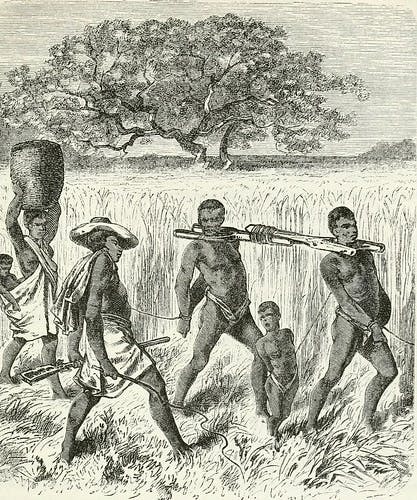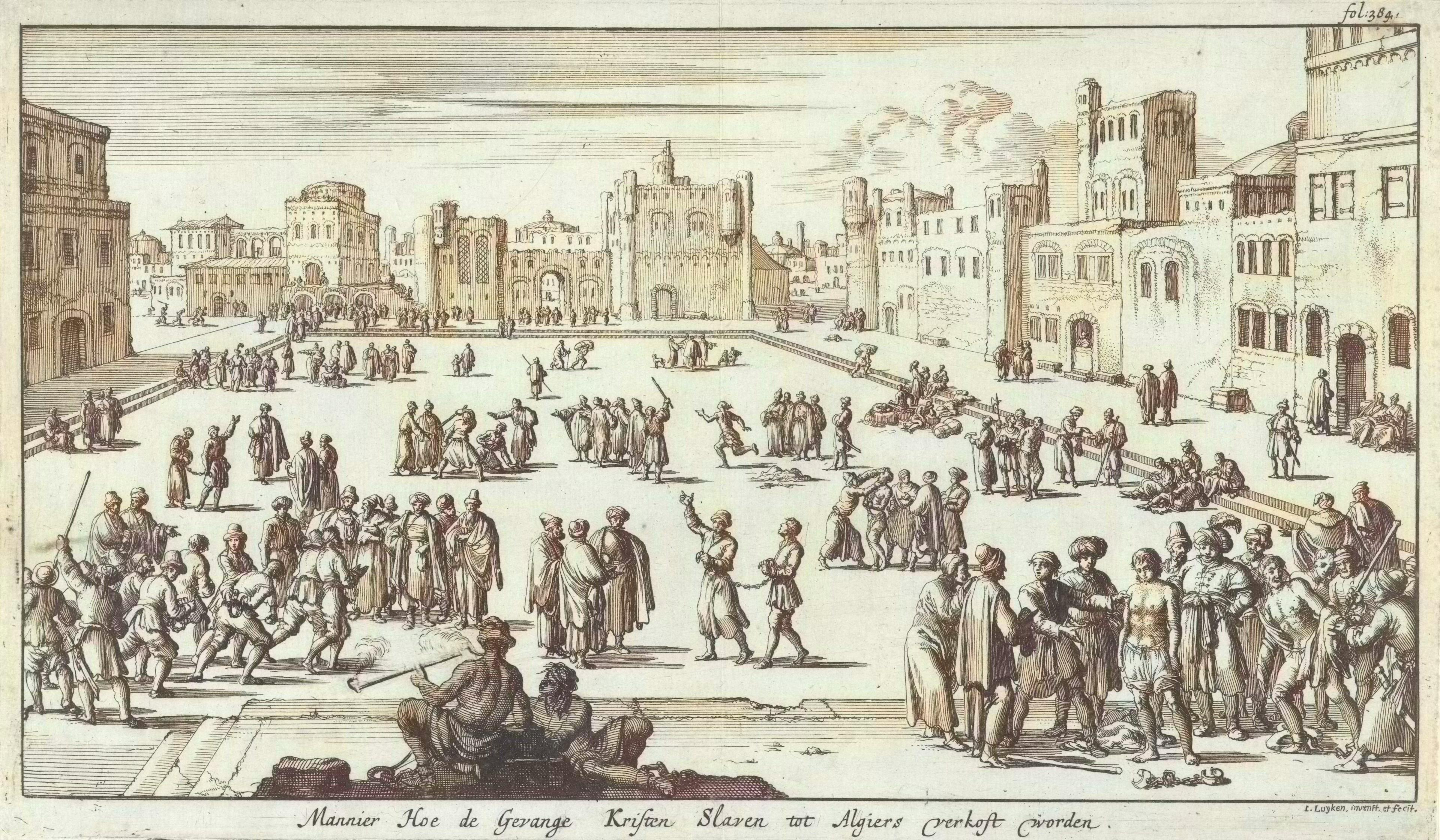The History Of Slavery Scholars Don’t Want You To Know
We all know that slavery is one of the darkest parts of human history. But what’s misleading is when we’re made to believe that slavery is solely “the sin of the white man.”

Often enough, contemporary academics and scholars try to hide the full picture of what slavery really was so they can manipulate public opinion into believing a certain set of narratives concerning “racial justice.”
Here are some facts you’re rarely told about the history of slavery.
The Origins of the Word "Slave"
Let's start with the basics. Where does the word slave come from? Although slavery has existed throughout history, the English word for "slave" has nothing to do with Africa or its inhabitants. Instead, it derives from the word for Slavs, the Eastern European ethnic group who were enslaved by fellow Europeans for centuries before Africans were targeted by the slave trade.
Slavery Is Not a “White People Only” Problem
The impression that the African slave trade was the sole responsibility of white Europeans is rooted in the total ignorance of actual historical fact. For several centuries, even before the time of the European Transatlantic slave trade, the Arab Muslims had initiated, perfected, and dominated the commerce of slaves from Africa.
And it wasn’t just black Africans who ended up being the victims of this inhumane practice, for there were countless white Europeans who were also sold into slavery during the height of this slave trade.

Slavery has existed for most (if not all) of human history, everywhere in the world.
Unlike current popular belief, slavery was not an institution that was “invented by the white man.” Rather, the institution of slavery has existed since the beginning of time and was practiced by just about everyone throughout human history. Also, while the Transatlantic slave trade by white Europeans lasted for three centuries, the Arab Trans-Saharan slave trade lasted for nearly 14 centuries (from 650 – 1900).
The white European slave trade lasted for three centuries, while the Arab Trans-Saharan slave trade lasted for nearly 14 centuries.
The Arab slave trade was just as prolific but more horrifying than the transatlantic one.
There’s a great article written by Larry Elder you should read to learn more about the true history of slavery. Elder talks about research from Ghanaian professor John Azumah on the history of slavery. Among the many interesting things from his article you should know about the Arab slave trade are:
Most of the black male slaves destined for the Middle East were castrated based on the assumption that black males have an uncontrollable sexual appetite.
Most of the children born to black slave women were killed at birth.
Women were the predominant victims of the slave trade, and “While almost all the slaves shipped across the Atlantic were for agricultural work, most of the slaves destined for the Muslim Middle East were for sexual exploitation as concubines in harems and for military service.”
But why should we care about the Arab slave trade? “We’re in America and should focus on the American problem of slavery!” as some will argue. Well, because something else you may not be aware of was how this Arab slave trade played a pivotal role in bringing the institution of slavery into the New World (America).
Africans sold each other into slavery.
Another common narrative is that white Europeans invaded Africa in order to steal slaves from villages to be used as slaves. But that narrative seems to be largely false. Instead, it was African kings, chiefs, and merchants who abducted their own people (or, more often, those of tribes with whom they were warring) in order to be sold to European or Arab slave traders.
The Story of Anthony Johnson, the First Legal Slave Owner in America
Anthony Johnson was captured by Arab slave traders in Portuguese Angola around 1620. Johnson was sold as an indentured servant to a white planter named Bennet to work on his Virginia tobacco farm. Keep in mind that Anthony Johnson himself wasn’t a slave because slave laws were not passed until 1661 in Virginia. Before that, Africans were not considered to be slaves. (Bring that tidbit up whenever someone tries to quote the sloppy history of New York Times 1619 Project as the start of American slavery.)
Anyways, Anthony Johnson was an industrious man. After fulfilling his contract, he was freed from his indentured servitude and was granted the farmland he was entitled to at the end of the contract. He married a woman named Mary, and they were respected for their "hard labor and known service." Mary and her daughters were even given the same social standing as white women by the Virginia government as the Johnson women were exempted from paying taxes like white women.
Anthony Johnson went on to become a successful farmer with five indentured servants working for him.
Anthony Johnson then went on to become a successful farmer and had five indentured servants working for him. Four of them were white, and one of them was black. This black indentured servant ended up becoming the first man to lose his legal rights as a man and be made into a slave in America. His name was John Casor, and John Casor’s enslavement opened the door for the practice of slavery in America.
The Story of John Casor, the First Legal Slave in America
You know how a court ruling will set a precedent for future rulings? This is important to know because the legal precedent of John Casor’s enslavement by the law was a decision that became the basis for future legal decisions. Seven years after John Casor’s enslavement, slavery was legalized in Virginia.
In 1654, John Casor was due for release from his indentured service to Johnson. Casor had plans to leave and start working for Robert Parker, Johnson’s neighbor who was a free white man. Anthony Johnson, in his decision to keep Casor under his service, sued his white neighbor for the return of Casor.
Anthony Johnson, in his decision to keep Casor under his service, sued his white neighbor for the return of Casor.
Robert Parker initially won the suit, but Johnson appealed, and the court reversed the ruling. In 1655, the court ruled that Johnson could hold Casor indefinitely because Johnson insisted that "hee had ye Negro for his life." Robert Parker had to return Casor to Johnson. Parker also had to pay the court for the lawsuit to free John Casor from the lifetime servitude under Johnson.
This is where the tragedy of slavery started in America. The Northampton Court gave sanction for blacks to hold slaves of their own race. Anthony Johnson became the first legal American slave owner, and John Casor became the first slave in the American colonies. 15 years later, the colonial assembly then granted free whites, blacks, and Indians permission to own black slaves.
Black Slaveholders in America
Anthony Johnson wasn’t the only black man who had slaves. According to historian R. Halliburton, Jr.: “There were approximately 319,599 free blacks in the United States in 1830. Approximately 13.7 percent of the total black population was free. A significant number of these free blacks were the owners of slaves. The census of 1830 lists 3,775 free Negroes who owned a total of 12,760 slaves.”
Thousands of freed black slaves went on to own slaves themselves.
In simple English, there were thousands of freed black slaves who went on to own slaves themselves. According to economic historian Stanley Engerman, "In Charleston, South Carolina about 42 percent of free blacks owned slaves in 1850, and about 64 percent of these slaveholders were women."
One of the most successful and prosperous plantation owners in South Carolina was a black former slave named William Ellison, Jr. Ellison owned 63 black slaves, making him the largest of the 171 black slaveholders in South Carolina. It would be interesting to know that during the American Civil War, Ellison and his sons supported the Confederate States of America and gave the government substantial donations and aid.
This is a part of American history which many people will evade. Fact is, the institution of black slaveholding was widespread in America. But because this fact of history eradicates the narrative that’s put forth by the proponents of racial politics, the history of black slaveholding has been often ignored by scholars. Notice too how scholars tend to ignore the history of Native American Indians owning black slaves. Or even the case of Dr. Andrew Turnbull’s white Minorcan slaves in Florida.
Slavery Is a Human Problem, Not Just an “American Problem”
Back to the Arab slave trade. The pirates (called corsairs) from the Barbary Coast in North Africa – cities such as Tunis and Algiers – would attack ships in the Mediterranean and the Atlantic, as well as seaside villages, to capture men, women, and children. France, England, and Spain lost thousands of ships, and the people living along the Spanish and Italian coasts abandoned their homes to run to safety from being caught and enslaved.
Hundreds of thousands of Christian slaves were taken from the Mediterranean countries. Even Americans were not immune. For example, one American slave reported that 130 other American seamen had been enslaved by the Algerians in the Mediterranean and Atlantic just between 1785 and 1793.
130 American seamen were enslaved by the Algerians in the Mediterranean and Atlantic between 1785 and 1793.
As Thomas Sowell wrote, "More whites were brought as slaves to North Africa than blacks brought as slaves to the United States or to the 13 colonies from which it was formed. White slaves were still being bought and sold in the Ottoman Empire, decades after blacks were freed in the United States."
Closing Thoughts
The fact that some white Christians were once held as slaves by Arab and black Muslims certainly does not excuse slavery in America. But realizing how there were blacks who also held slaves in America certainly attests that slavery isn’t solely the sin of the white race. Slavery is a common sin of the human race. This is why we have to be careful of unscrupulous agitators who’d gladly exploit the pain and abuse suffered by the slaves of history as a means of furthering their own political agendas.